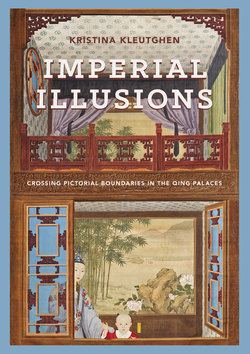Читать книгу Imperial Illusions - Kristina Kleutghen - Страница 52
На сайте Литреса книга снята с продажи.
Оглавление1.6Detail of Yuan Jiang,
The Penglai Isle of the Immortals,
1708. Hanging scroll, ink
and color on silk, 160 × 97 cm.
Palace Museum, Beijing,
Gu187505.
a literatus). Perhaps the religious subject matter of this painting also diminished Jiang’s assessment of its quality: a religious work would have been produced by professional painter as a functional devotional image for public consumption, much as a Buddhist or Daoist mural would have been.
Between the use of established literati painting discourse to criticize Western painting and the dominant position that orthodox landscape painting held in the seventeenth century, European representational modes might well have failed to produce any effect whatsoever on Chinese painting. However, with the Kangxi emperor’s appropriation of orthodox, Northern Song, and Western painting elements, all in the service of statecraft, an entirely new synthesis of previously disparate pictorial elements was born. Kangxi established not only the precedent for imperial commissions that blended Chinese and European styles, but also the presence of trained European artists at the High Qing court—and with them, the use of deceptive illusionistic painting to advance the Qing imperial agenda.
